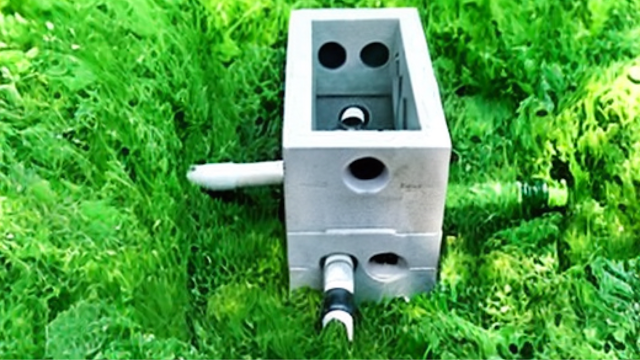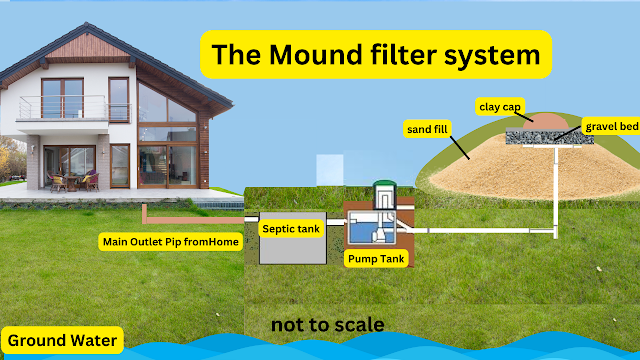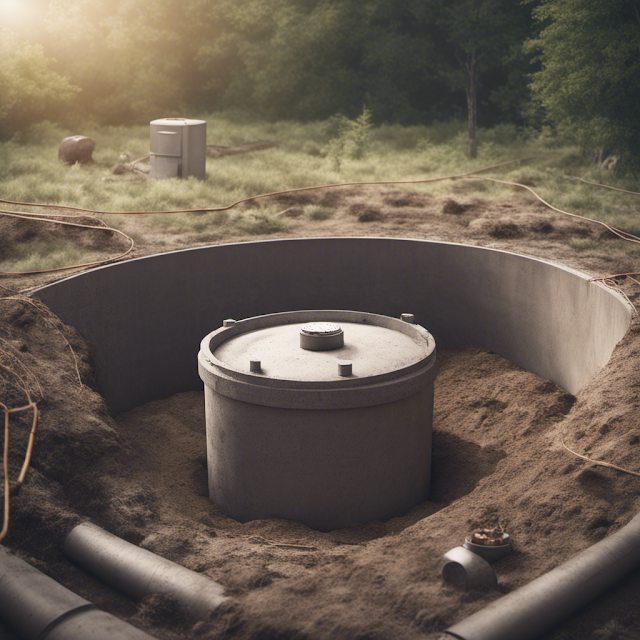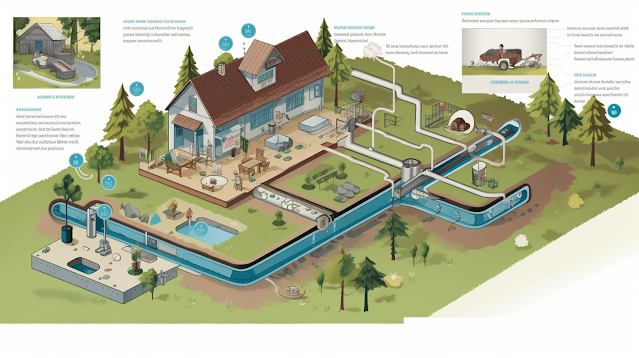Decoding Cesspools: How Do They Differ From Septic Tanks?
 |
| Decoding Cesspools: How Do They Differ From Septic Tanks |
Are you ready to embark on a journey of discovery, unraveling the secrets of cesspools and septic tanks? Imagine a world where waste management becomes a breeze, where understanding the differences between these systems is your key to a cleaner, healthier environment.
In this article, we'll delve into the inner workings of cesspools
and septic tanks, shedding light on their unique mechanisms. Get ready to make
an informed decision, as we compare the pros and cons of each system, guiding
you towards waste management bliss.
Let's dive in together.
Key Takeaways
•
Cesspools are shallow pits that
collect and temporarily store wastewater, while septic tanks are more complex
systems with multiple chambers that treat wastewater before discharging it into
a drain field.
•
Cesspools rely on gravity to
separate solids from liquids, while septic tanks use bacteria for decomposition
and further treatment of wastewater.
•
Cesspools require more frequent
pumping and pose a higher risk of contaminating groundwater and water bodies,
while septic tanks provide a higher level of treatment and reduce contamination
risk.
•
Septic systems, including
septic tanks, offer an effective and environmentally friendly solution for
wastewater treatment and disposal, while cesspools are generally less efficient
and environmentally friendly.
Basic Definition and Purpose
If you're
wondering about the basic definition and purpose of cesspools and septic tanks,
it's important to understand that while both systems handle wastewater, they
differ in their mechanisms and functions.
A cesspool
is a simple underground pit or container that collects and temporarily stores
wastewater. It relies on gravity to allow heavy solids to settle at the bottom,
while lighter materials float to the top. The liquid portion then percolates
into the surrounding soil through small holes in the cesspool walls.
In contrast,
a septic tank is a more complex system that consists of two or more chambers.
The first chamber receives the wastewater and allows solids to settle, while
the second chamber further treats the liquid by promoting the growth of
beneficial bacteria. The treated effluent is then discharged into a drain field
for further filtration and absorption into the soil.
Design and Construction
When it comes to
design and construction, there are key differences between cesspools and septic
tanks.
Cesspools are
typically constructed as shallow and simple pits, often lined with concrete or
other porous materials.
In contrast,
septic tanks are designed with multiple chambers and compartments, allowing for
the separation and treatment of wastewater.
The construction
process for cesspools is relatively straightforward, while septic tanks require
more intricate planning and installation to ensure proper functionality.
Cesspool Vs Septic:
Differences
Cesspools and septic tanks differ in their mechanisms and have
distinct advantages and disadvantages. Understanding these differences can help
you make an informed decision when it comes to choosing the right system for
your needs.
Here are the key differences between cesspools and septic tanks:
•
Mechanism: A cesspool is a simple pit that collects wastewater and allows it
to seep into the surrounding soil. On the other hand, a septic tank is atwo-chamber system that separates solid waste from liquid waste and uses
bacteria to break down the organic matter.
•
Maintenance: Cesspools require frequent pumping as they don't have the same
level of treatment as septic tanks. Septic tanks, on the other hand, need to be
pumped less frequently due to their design and the natural breakdown of waste.
•
Environmental Impact: Cesspools pose a higher risk of polluting groundwater and nearby
water bodies due to the lack of treatment. Septic tanks, however, provide a
higher level of treatment and reduce the risk of contamination.
•
Space Requirement: Cesspools take up less space as they're a single pit, while septic
tanks require more space as they've two chambers and a drain field.
Understanding these differences can help you determine which system
is the right fit for your property and environmental considerations.
Pros of Septic
One advantage of septic systems is that they provide a higher level
of treatment for wastewater, reducing the risk of groundwater contamination.
Unlike cesspools, which are basically pits that collect and hold
wastewater without any treatment, septic systems utilize a series of components
to treat and dispose of wastewater.
The primary component of a septic system is the septic tank, which
separates solids from liquids. The solid waste settles at the bottom of the
tank while the liquid waste, known as effluent, is discharged into a drain
field where it undergoes further treatment through soil filtration.
This process helps to remove harmful bacteria and contaminants from
the wastewater before it reenters the groundwater. In comparison, cesspools
don't have these treatment mechanisms, making them more prone to contaminating
the surrounding environment.
Therefore, septic systems offer a more effective and environmentally
friendly solution for wastewater treatment and disposal.
Cesspool Construction
Process?
To construct a cesspool, you dig a hole in the ground and line it
with concrete or other impermeable material to prevent the wastewater from
seeping into the surrounding soil. The construction process involves several
steps:
•
Excavation: You start by
digging a hole in the ground, usually about 10 to 15 feet deep, depending on
the size of the cesspool.
•
Lining: Once the hole is
excavated, you line it with concrete or other impermeable materials, such as
plastic or fiberglass. This lining ensures that the wastewater is contained
within the cesspool and doesn't seep into the ground.
•
Inlet and Outlet Pipes: Next,
you install inlet and outlet pipes in the cesspool. The inlet pipe carries the
wastewater from the house to the cesspool, while the outlet pipe allows the treated
effluent to flow out of the cesspool.
•
Ventilation: Finally, you
provide ventilation for the cesspool to release any gases that may accumulate
inside.
Mechanism of Waste Treatment
You'll be
interested to know that septic tanks use a natural process of bacterial
decomposition to treat waste, while cesspools rely on a more primitive method
of waste containment.
In septic
tanks, the waste enters the tank through an inlet pipe, where it undergoes a
series of processes. First, solid waste settles at the bottom, forming a sludge
layer, while lighter materials, like grease and oils, float to the top,
creating a scum layer. The liquid waste, known as effluent, is then released
into the drain field, where it percolates through the soil, undergoing further
treatment through natural biological processes.
On the other
hand, cesspools simply collect waste in an underground pit without any
treatment or separation. The waste remains stagnant, and over time, solid waste
accumulates, leading to potential clogs and blockages. Consequently, cesspools
require more frequent maintenance and are generally less efficient and
environmentally friendly compared to septic tanks.
Capacity and
Maintenance Requirements
If
you choose a septic tank system, you'll need to consider its capacity and
maintenance requirements.
A
septic tank's capacity refers to its ability to hold and treat wastewater
effectively. The size of the tank depends on the number of people in your
household and your daily water usage. It's crucial to select a tank with an
appropriate capacity to avoid overloading the system.
Regular
maintenance is essential to ensure the proper functioning of your septic tank.
This includes regular inspections, pumping out the accumulated sludge, and
taking measures to prevent solids from entering the tank. Neglecting maintenance
can lead to system failures, unpleasant odors, and costly repairs.
To
maintain your septic tank system effectively, it's recommended to follow a
strict maintenance schedule, including periodic inspections and pumping.
Environmental Impact
When it comes to
environmental impact, both cesspools and septic tanks have their own set of
concerns.
Cesspools, due to
their lack of treatment systems, can lead to the direct contamination of soil
and water sources. This can result in the release of harmful pathogens,
nutrients, and chemicals, posing a threat to both the environment and human
health.
In contrast, septic
tanks, although they provide a level of treatment, still have the potential to
cause soil and water contamination if they aren't properly maintained or if the
soil conditions are unsuitable for effective filtration.
Waste Disposal Methods
In waste disposal methods, cesspools and septic tanks serve as two
distinct options for managing household sewage.
Cesspools are underground pits that collect and store sewage,
relying on the surrounding soil to filter and disperse the liquid waste.
On the other hand, septic tanks are watertight containers that
separate solid waste from liquid waste, allowing bacteria to break down the
solids and send the treated effluent into a drain field for further filtration.
Here are the key differences between cesspools and septic tanks:
•
Cesspools require more frequent
maintenance and pumping due to their limited capacity.
•
Septic tanks are more efficient
in treating waste and require less frequent maintenance.
•
Cesspools aren't suitable for
areas with high water tables or poor soil conditions.
•
Septic tanks are adaptable and
can be installed in various soil types and geographical locations.
Understanding the differences between these waste disposal methods
is crucial to ensure proper management of household sewage.
Soil and Water Contamination
To prevent soil and water contamination, you should be aware of the
potential risks associated with cesspools and septic tanks.
Both systems serve as on-site wastewater treatment systems, but they
function differently. Cesspools rely on a simple design that allows wastewater
to seep into the surrounding soil, whereas septic tanks use a more
sophisticated process involving multiple chambers and bacterial activity to
break down solids.
However, both systems pose certain risks. Cesspools can contaminate
nearby groundwater and surface water with pollutants, while septic tanks can
leak or overflow, leading to the release of harmful pathogens and chemicals.
Regular maintenance and proper usage of these systems are crucial to
prevent contamination and protect the environment.
Types of Effluent
Disposal Systems
You
may be wondering what types of effluent disposal systems are available for your
property. Well, here are four options to consider:
•
Septic tank: This system
consists of a large underground tank that collects wastewater from your home.
The solid waste settles at the bottom while the liquid waste flows out into a
drain field for filtration.
•
Cesspool: Unlike a septic tank,
a cesspool doesn't have a separate drainage area. It's essentially a large pit
that collects all the wastewater, allowing it to slowly percolate into the
surrounding soil.
•
Aerobic treatment unit (ATU):
This system uses oxygen to break down waste more efficiently. It's often used
in areas with poor soil conditions or high water tables.
•
Mound system: This is a
variation of the septic tank system where the drain field is elevated above the
natural soil surface. It's commonly used in areas with shallow soil depth or
high groundwater levels.
Each
of these systems has its own advantages and disadvantages, so it's important to
consult with a professional to determine which one is best suited for your
property.
Cost Comparison:
Installation and Maintenance
When
it comes to cost, septic tanks and cesspools have distinct differences in both
installation and maintenance.
Installing a septic tank involves excavating a large hole in the ground, typically
requiring heavy machinery and skilled labor. The cost of this labor, along with
the materials needed for the tank itself, can add up quickly.
On
the other hand, cesspools are relatively simple to install. They consist of a
large pit lined with concrete or other materials, and can often be installed by
a single person. This simplicity makes cesspools a more affordable option in
terms of installation costs.
However,
when it comes to maintenance, cesspools can be more expensive in the long run.
They require regular pumping and cleaning, as the waste accumulates and can
cause blockages.
Septic
tanks, on the other hand, only need to be pumped every few years, making them
more cost-effective in terms of maintenance.
Common Issues and
Troubleshooting
If you
encounter any problems with your wastewater system, it's important to be aware
of the common issues that can arise and know how to troubleshoot them. Here are
some common problems you may encounter with your wastewater system:
•
Clogs: Clogs can occur in the
pipes leading to your septic tank or cesspool due to the buildup of solids and
debris. In such cases, you can try using a plunger or a drain snake to clear
the clog.
•
Foul odors: If you notice a
strong and unpleasant odor coming from your wastewater system, it could
indicate a problem. This could be due to a leak in the pipes or a
malfunctioning vent. You may need to call a professional to inspect and fix the
issue.
•
Slow drainage: Slow drainage is
often a sign of a clogged or overloaded system. You can try using a chemical
drain cleaner or an enzyme-based product to break down the clog and improve
drainage.
•
Backups: Backups can occur when
the wastewater can't flow out of the system properly. This can lead to sewage
backing up into your home or yard. If you experience a backup, it's crucial to
contact a professional immediately to prevent further damage.
Choosing the
Right System for Your Property
To
make an informed decision about which wastewater system is best for your
property, consider factors such as the size of your property, the number of
occupants, and your budget.
When
it comes to choosing between a cesspool and a septic tank, there are a few key
differences to consider. Cesspools rely on anaerobic bacteria to break down
waste, while septic tanks use a combination of bacteria and natural processes.
Cesspools
are typically smaller and require more frequent maintenance, whereas septic
tanks can handle larger volumes of waste and require less frequent pumping.
Additionally, cesspools are more prone to contamination and groundwater
pollution, while septic tanks provide a more environmentally friendly option.
Ultimately,
the decision will depend on your specific needs and circumstances. It's
recommended to consult with a professional to determine the best system for
your property.
Frequently Asked Questions
What Are the
Potential Health Risks Associated With Cesspools and Septic Tanks?
The potential health risks associated with cesspools and septic
tanks include groundwater contamination, spread of diseases, and foul odors. It
is important to properly maintain and regularly inspect these systems to
minimize these risks.
Can a Septic
Tank System Be Converted Into a Cesspool System, or Vice Versa?
Yes, you can convert a septic tank system into a cesspool system, or
vice versa. However, it is a complex process that requires careful
consideration of the existing infrastructure and regulatory requirements.
Are There Any
Regulations or Permits Required for Installing a Cesspool or Septic Tank?
To install a cesspool or septic tank, you may need to comply with
regulations and obtain permits. These requirements ensure safe and proper
installation, protecting the environment and public health.
How Do Cesspools
and Septic Tanks Affect Property Value?
Cesspools and septic tanks can have varying effects on property
value. Factors to consider include maintenance requirements, potential odor
issues, and environmental impact. It is essential to assess these factors
before making a decision.
Are There Any
Alternative Waste Treatment Systems Available Besides Cesspools and Septic
Tanks?
There are alternative waste treatment systems available besides
cesspools and septic tanks. They include composting toilets, anaerobic
digesters, and greywater recycling systems. Each system has its own advantages
and disadvantages.
Conclusion
In conclusion, understanding
the differences between cesspools and septic tanks is essential for effective
waste management.
While both systems have their
pros and cons, it's crucial to choose the right system for your property based
on factors like capacity, maintenance requirements, and environmental impact.
Just like selecting the right
tool for a job, selecting the right wastewater system ensures a smooth and
efficient waste disposal process.
Ultimately, this contributes
to a healthier environment for all.



.png)






Comments
Post a Comment